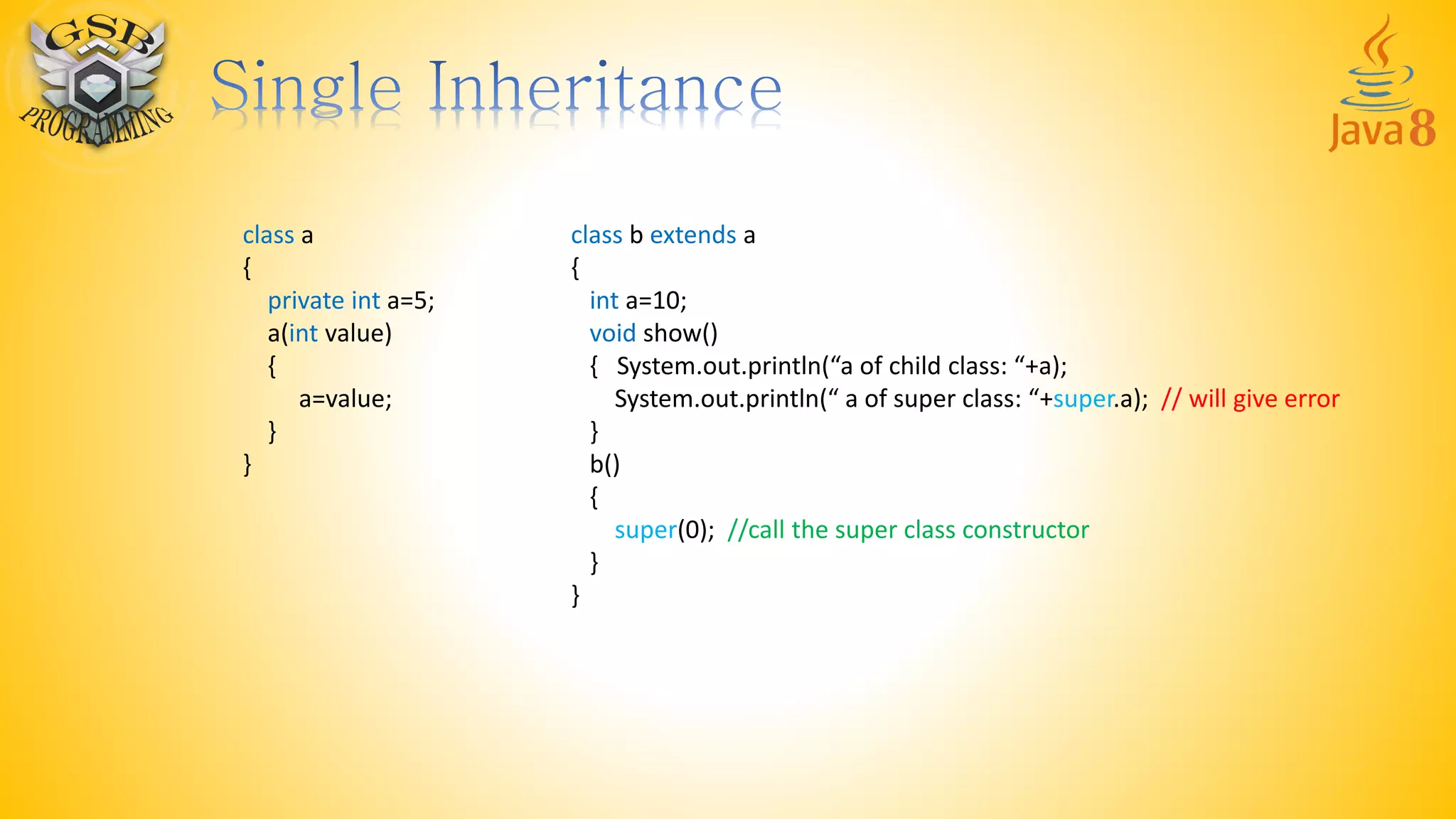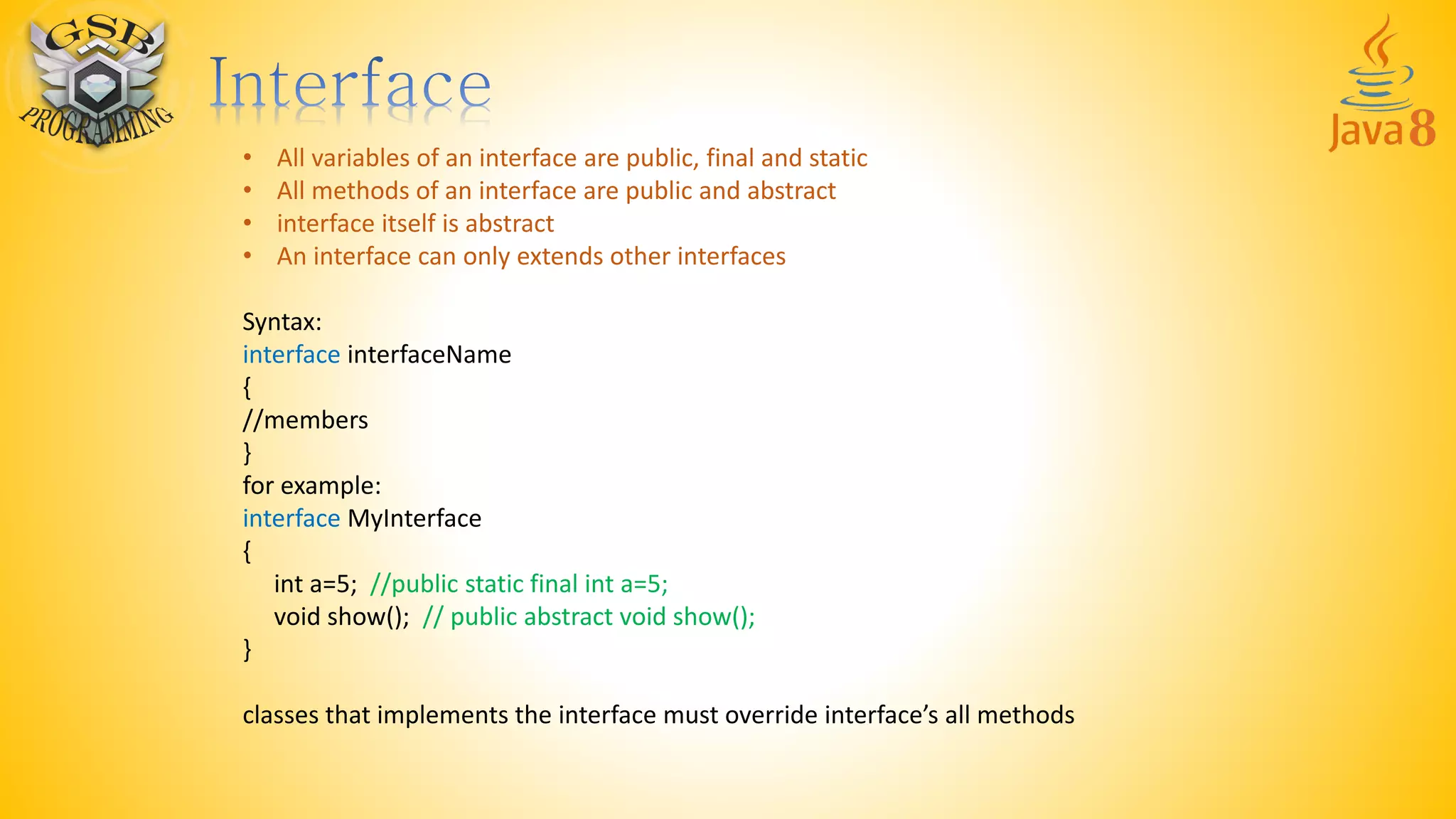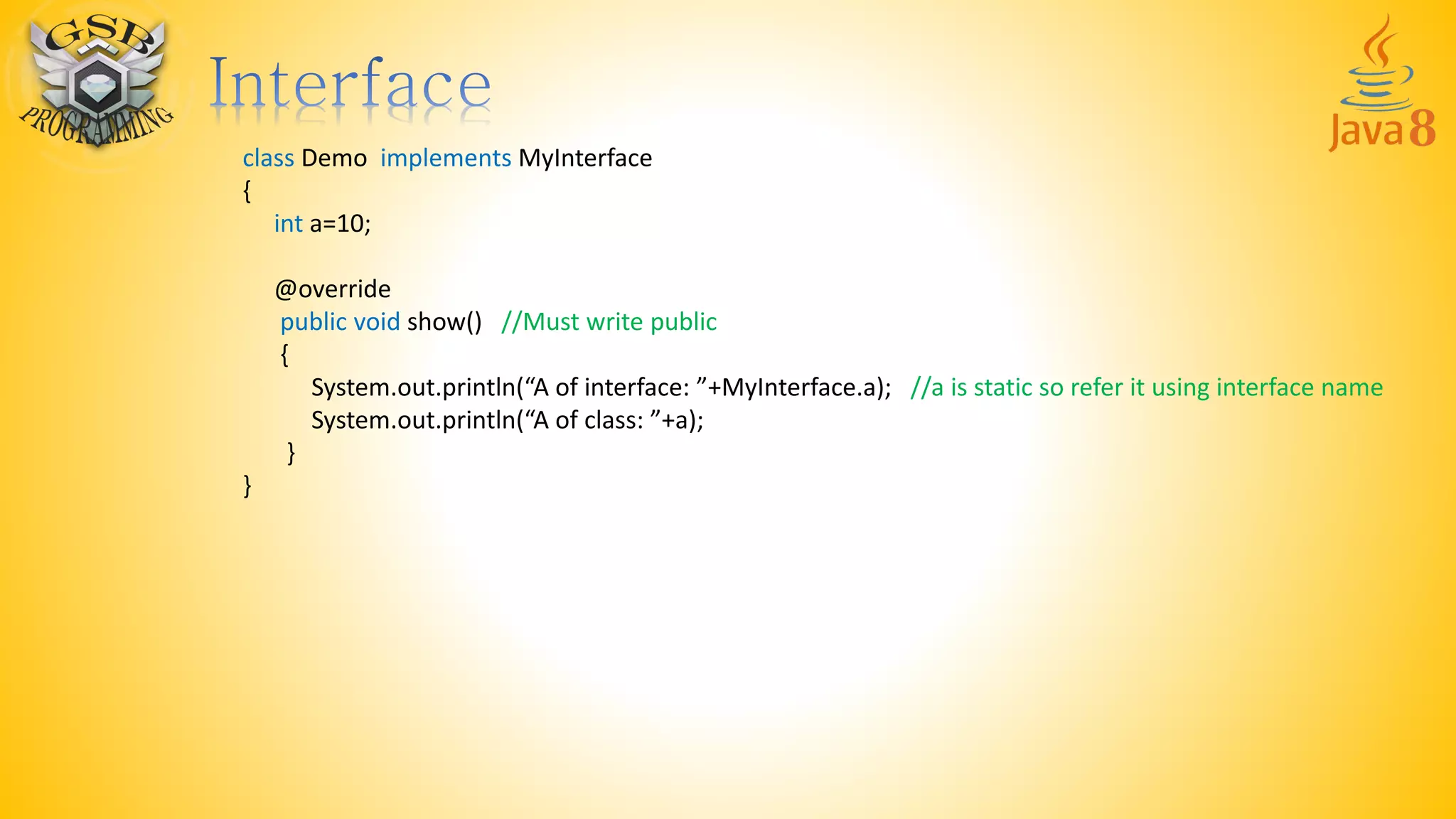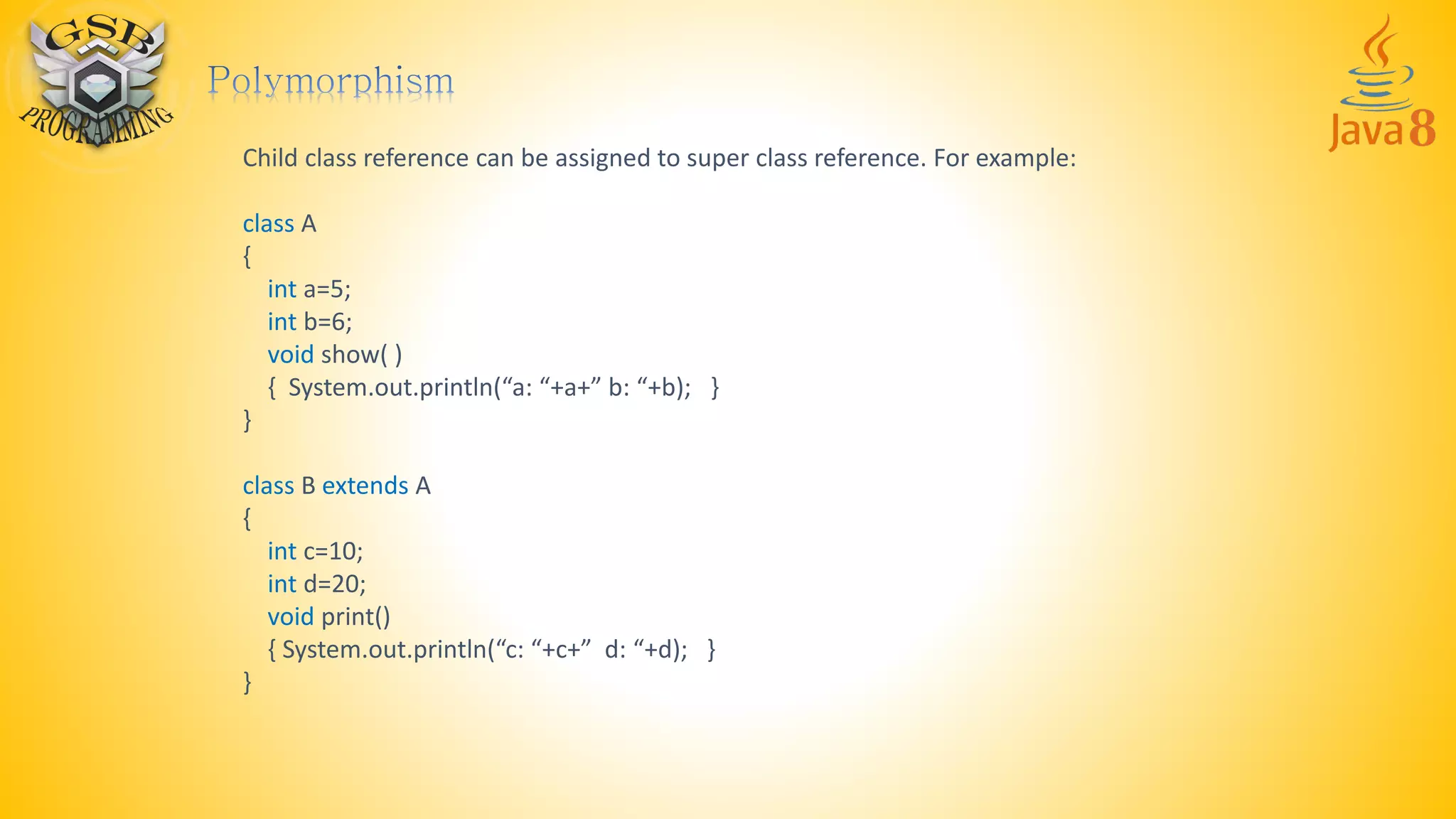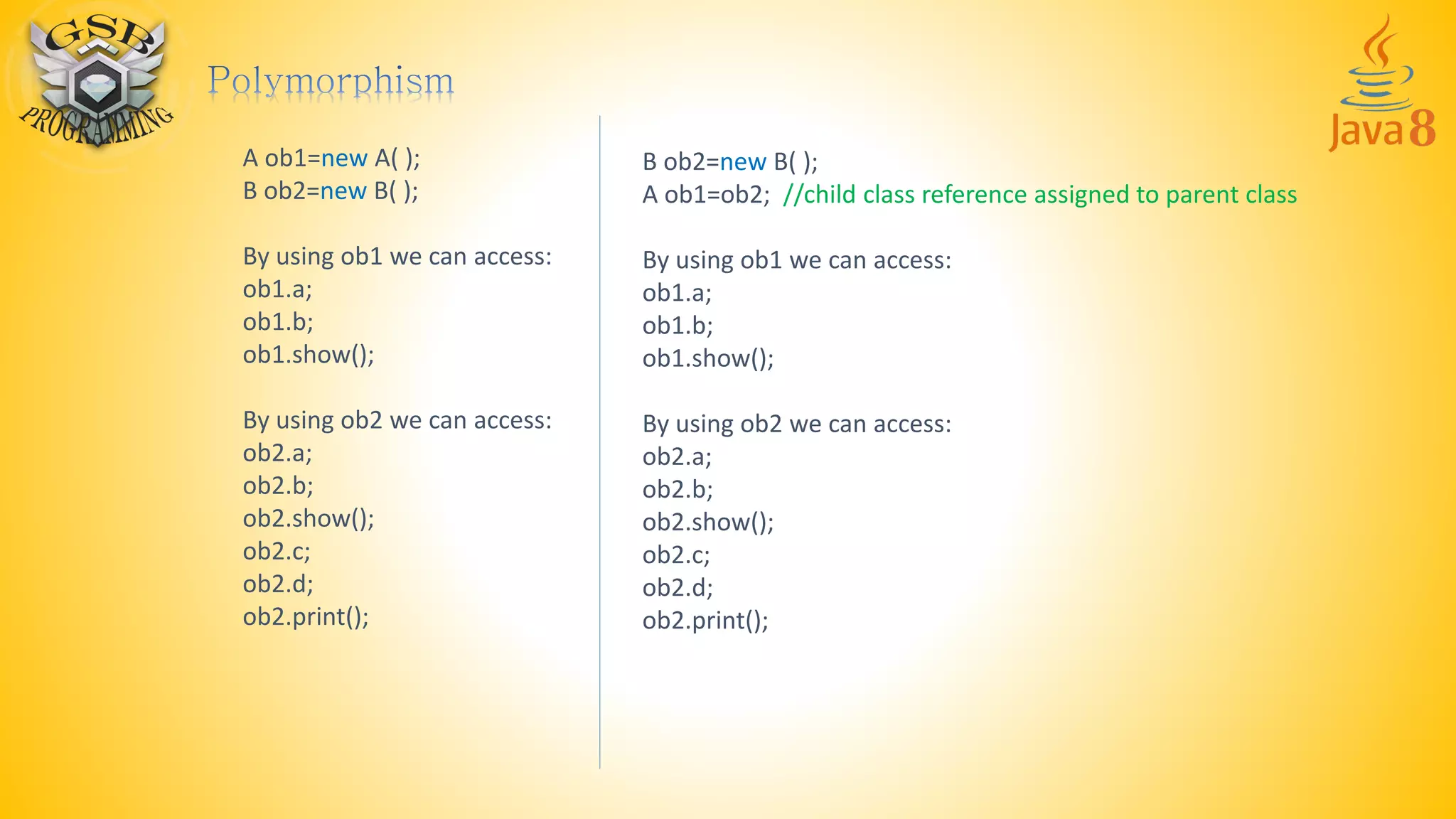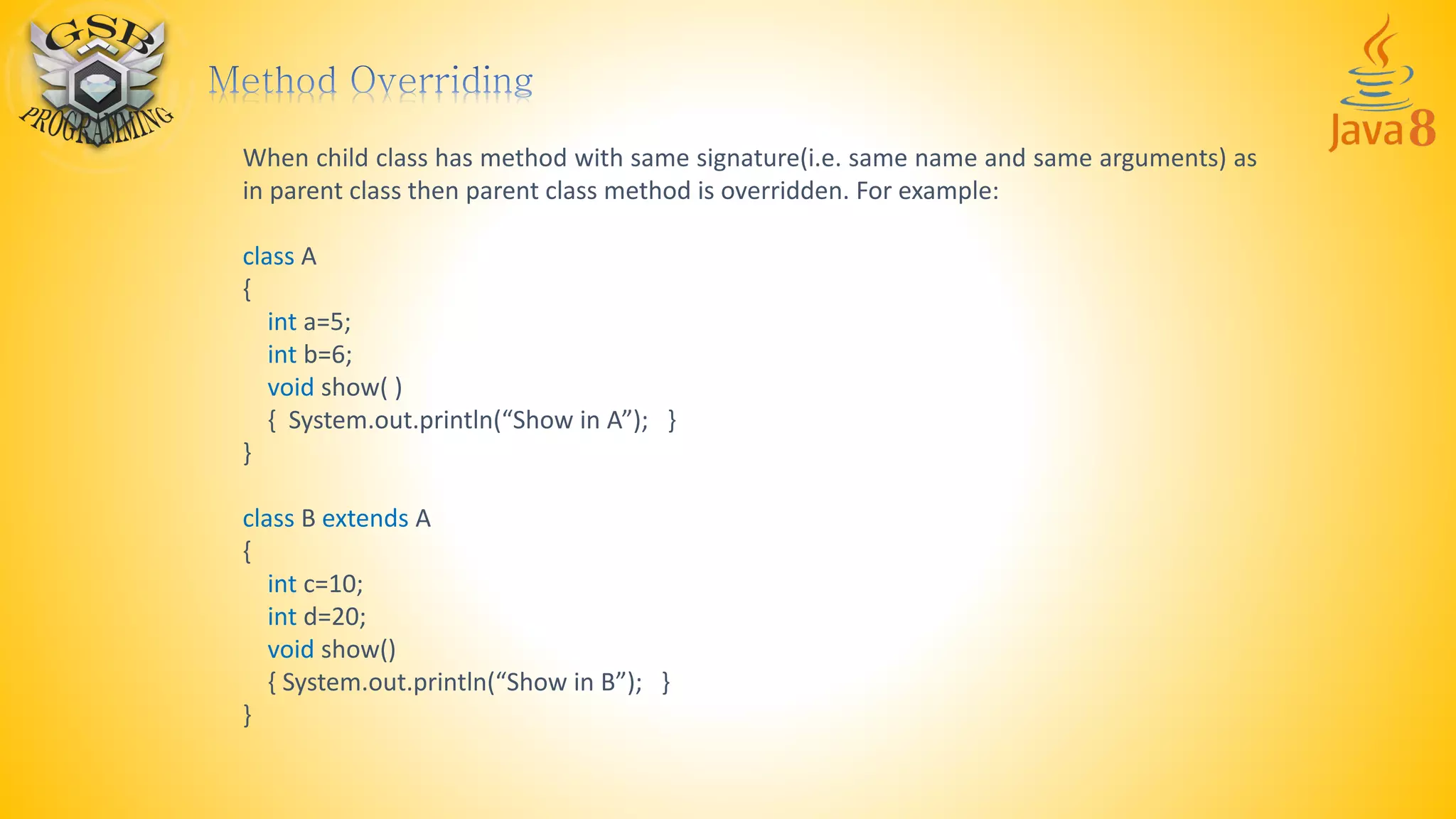This document discusses key object-oriented programming concepts in Java including inheritance, interfaces, polymorphism, and method overriding. It provides examples of how subclasses inherit fields and methods from parent classes, how to call parent class constructors, and how child class methods can override parent class methods of the same signature. The document also covers how interfaces define public abstract methods and variables, and how classes implement interfaces by overriding interface methods.





